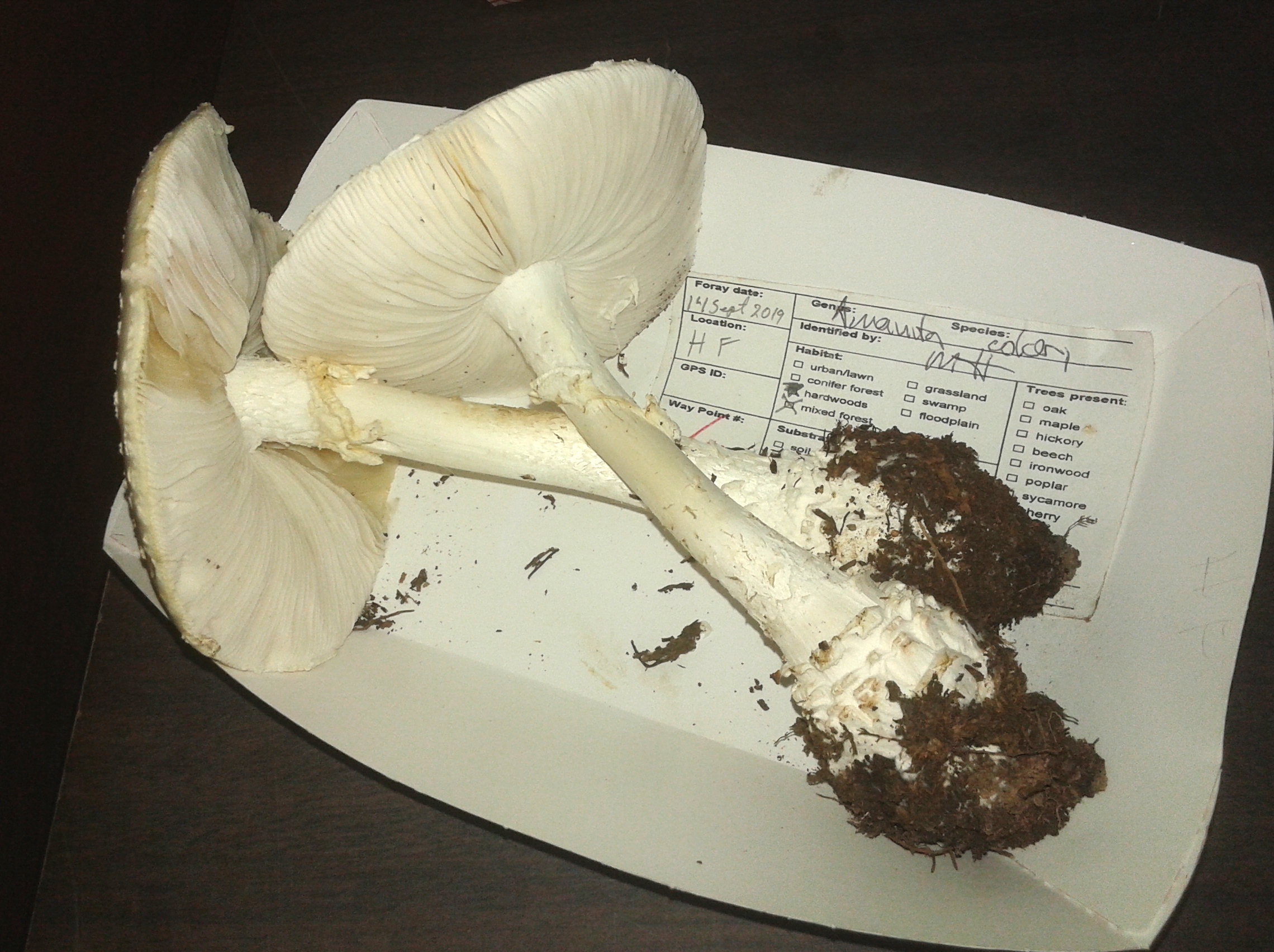Mushrooms are great.
For many reasons, one of which is a succulent, rich flavor.
But, not all are edible.
Some will make you feel queasy. Some will kill you by severely damaging your internal organs.
By paying attention to the physical characteristics of a mushroom, we can decide whether we might eat it, or whether we should admire its beauty without taking a bite.
This one is easy:

• White cap
• Smooth cap
• White gills
• White stalk
• White collar
VERY POISONOUS! It is not called ‘Destroying Angel’ for nothing!
The General Idea
We should make a way to predict whether a particular mushroom is poisonous or edible.
Classification vs. Regression
We would be making a binary classification ( edible or poisonous) of observed mushrooms.
A different tool might do something like predict the sale price at a farmers’ market of a crop of mushrooms. Unlike a classification of an observation into one of a set of separate alternatives, a regression outputs a value along some continuous range, like a price.
Good Data
To build such a classifier, we could use some trusted data to build a function that indicates whether a mushroom should be treated as poisonous or edible.
I used a data set named the Mushroom Data Set from the valuable University of California Irvine Machine Learning Repository, at https://archive.ics.uci.edu/ml/datasets/Mushroom.
Workflow
My work on this is available on github, at https://github.com/gptix/is-this-poisonous
Get Data
I downloaded data from UCI, then imported it into a Pandas dataframe, and did some initial checking of the data. This data set is very well structured and documented.
I then split the data into the target (poisonousness) and features (the facts noticed, used to predict toxicity).
I also split the data into three sets: one for training models, one for validating trained models, and a third for final testing after validation.
Baseline
To see whether a classifier (or regression) model is particularly useful, we can establish a baseline by seeing how often we would be correct if we simply make the same ‘guess’ every time.
Using the data from the UCI Mushroom set, we will be right a little over 53% of the time if we ‘guess’ that every mushroom is edible.
Here is a histogram showing the split of edible vs. poisonous in the data set.

Different Models
Linear Regression
I built a linear regression model using SciKit Learn’s sklearn.LinearRegression. I got a validation accuracy of a little over 96%, a marked improvement over guessing.
Decision Tree
I built a decision tree classifier using SciKit Learn’s sklearn.DecisionTreeClassifier. I got a validation accuracy of almost 99%. Big if true.
Here is the tree:

Should we try to be Accurate?
We should not try to be accurate.
Accuracy is a measure of the fraction of all measurements (or predictions, or classifications) that we get right. With our classifier, this would be
(‘we guess poisonous and it’s poisonous’ + ‘we guess edible and it’s edible’)
divided by
all guesses.
But, I want to make really sure I identify every poisonous mushroom, even if this entails mis-classifying some edible mushrooms as poisonous.
Recall is a metric to use for this. it would be
(‘we predicted poisonous’)
divided by
(‘really is poisonous’ - which is the same as [‘guessed poisonous correctly’ plus ‘guessed edible incorrectly’]).
I want this really close to one.
So, recall is our choice of metric.
Recall Scores on Decision Tree
I got a recall score, on my validation set, of 99.5%. Finally, I calculated the recall score on my (reserved) test set of 98.8%.
Both of these scores are good, but I have further work to do, like trying different models to see if they get better recall scores. I am also interested in why my recall score using test data is lower than using my validation data. Perhaps this is not significant.
PLEASE NOTE:
This is work for studies I am doing at Lambda School, in the Data Science curriculum, cohort DS10 (go Laser Sharks ! ).
I am not a mycologist.
DO NOT USE THIS CLASSIFIER TO DECIDE WHETHER TO EAT ANY MUSHROOM.
If you are interested in finding a variety of succulent mushrooms, and some inedible but fascinating mushrooms and other fungi, please join me at the Mushroom Club of Georgia.
- The data set actually includes inedible mushrooms in the ‘poisonous’ category, although some mushrooms are neither edible nor poisonous.